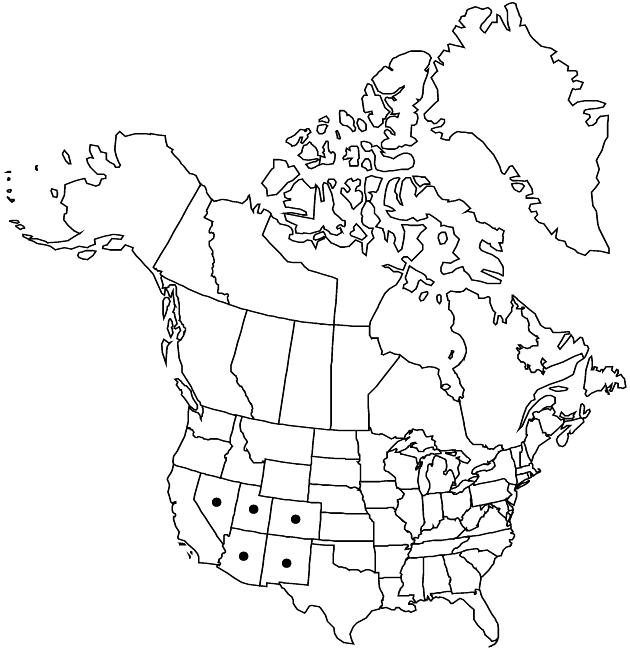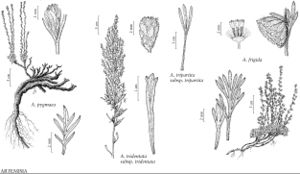Artemisia pygmaea
Proc. Amer. Acad. Arts 21: 413. 1886.
Shrubs, 5–10 cm, slightly aromatic; not root-sprouting (caudices coarsely woody, branched). Stems pale to light brown (stiffly erect, densely clothed with appressed foliage), sparsely tomentose. Leaves persistent (sessile, rigid), bright green; blades oblong to ovate, 0.3–0.5 × 0.2–0.3 cm, pinnately lobed (nearly to midribs, 1/3+ widths of blades, lobes 3–7, divergent), faces glabrous or sparsely tomentose, resinous. Heads (sessile, erect) in paniculiform to racemiform arrays (1–)2–3 × 0.5–1 cm. Involucres narrowly turbinate, 2–3 × 3–4 mm. Phyllaries (green) narrowly lanceolate (midribs prominent), glabrous or sparsely tomentose. Florets 2–6; corollas 2.5–3 mm, glandular (style branches flat, erose, exsert). Cypselae (prismatic) 0.4–0.5 mm, glabrous, resinous. 2n = 18.
Phenology: Flowering mid summer–fall.
Habitat: Fine-textured soils of gypsum or shale
Elevation: 1500–1800 m
Distribution

Ariz., Colo., Nev., N.Mex., Utah.
Discussion
Artemisia pygmaea is a distinctive, faintly aromatic shrublet, often mistaken for something other than a sagebrush. In early spring its stiff, bright green, deeply pinnatifid leaves are reminiscent of some prickly member of Polemoniaceae. After flowering, its heads and narrow panicles easily identify it as a member of Artemisia; it is unlike other members of the subgenus (which typically have 3-lobed leaves in fascicled lateral shoots). The molecular analysis by L. E. Watson et al. (2002) supported its phylogenetic alignment within subg. Tridentatae.
Selected References
None.
